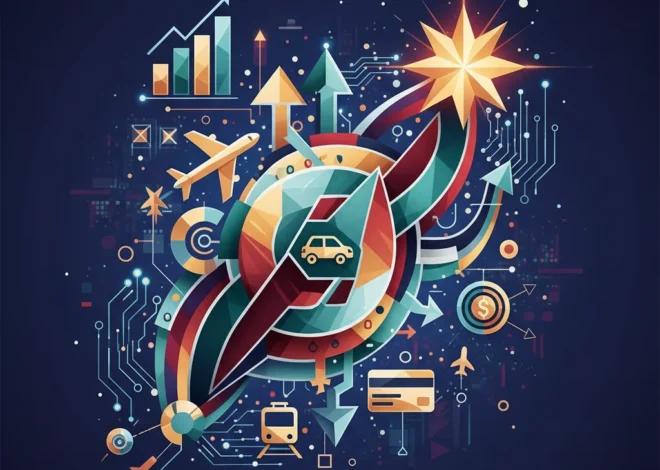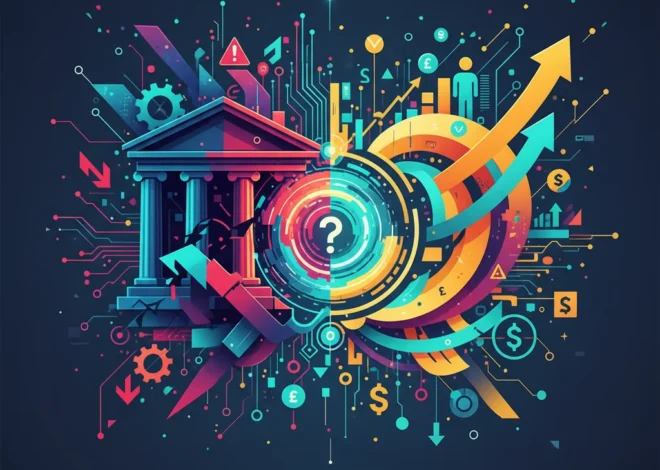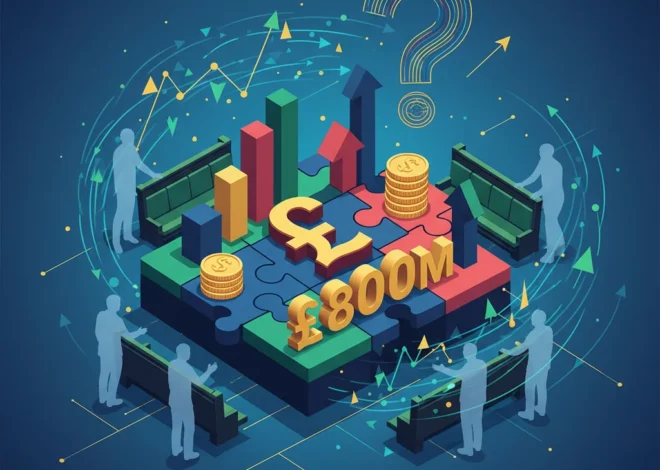
The Quantum Leap: Why Today’s Financial Markets Are on the Brink of a Sci-Fi Revolution
We live in an age where the fantastical rapidly becomes the functional. Just two decades ago, the idea of a supercomputer in every pocket with instant access to global markets was the stuff of a spy thriller. Today, it’s how we order coffee. The recent explosion in generative Artificial Intelligence (AI) has once again recalibrated our sense of the possible, transforming industries in real-time. But what if this is just the opening act?
In a recent letter to the Financial Times, Franco Vitaliano, President and CEO of quantum computing firm ExQor Technologies, suggested that the true revolution lies just beyond the horizon. He argues that the convergence of AI with quantum computing will unlock capabilities that make today’s most advanced systems look quaint. This isn’t just an incremental upgrade; it’s a paradigm shift that will redefine the very fabric of our global economy, from drug discovery to materials science and, most profoundly, to the world of finance.
This post delves into that near-future, exploring how the powerful symbiosis of quantum computing and AI is poised to transform investing, trading, and risk management. We’ll unpack what this means for investors, business leaders, and the stability of the global stock market, moving from the theoretical to the tangible impact on your portfolio and our financial systems.
Beyond the Hype: Understanding the Quantum-AI Symbiosis
To grasp the magnitude of this shift, we must first understand the two forces at play. AI, particularly machine learning, has already made deep inroads into the financial sector. Algorithmic trading, AI-powered credit scoring, and robo-advisors are now standard components of modern financial technology (fintech). These systems excel at recognizing patterns in vast datasets, but they operate within the constraints of classical computing—a world of ones and zeros.
Quantum computing operates on a completely different set of principles. Instead of bits, it uses qubits, which can exist in multiple states simultaneously (a concept called superposition) and can be linked together in a way that their fates are intertwined (entanglement). This allows quantum computers to explore a colossal number of possibilities at once. While a classical computer checks every path in a maze one by one, a quantum computer can explore all paths simultaneously. According to a report by McKinsey, this capability makes them exceptionally suited for solving complex optimization and simulation problems that are “intractable” for even the most powerful supercomputers today.
When these two technologies merge, we get Quantum Machine Learning (QML). Imagine an AI that isn’t just learning from past data but can simulate an almost infinite range of future economic scenarios to find the truly optimal strategy. This is the engine that will power the next generation of finance.
The Trillion-Dollar Handshake: Unpacking the Global Economic Stakes of the Trump-Xi Summit
The Financial Revolution: Reimagining Markets and Investing
The impact of Quantum AI on the financial industry will be seismic, fundamentally altering how capital is allocated, risk is managed, and value is created. The changes will go far beyond simply making existing processes faster; they will enable entirely new approaches to banking and investing.
1. Hyper-Personalized Portfolio Optimization
Today’s portfolio management is a game of averages and approximations. Quantum AI will allow for the analysis of millions of assets with thousands of correlated variables—from macroeconomic indicators and geopolitical shifts to market sentiment and supply chain disruptions—all in real time. This will enable the creation of truly optimized, dynamic portfolios tailored to an individual’s precise risk tolerance and goals, far surpassing the capabilities of current robo-advisors.
2. Predictive and Precise Risk Modeling
Financial institutions spend billions on risk modeling, using techniques like Monte Carlo simulations to forecast potential losses. Yet, they are still frequently surprised by “black swan” events. Quantum computers can run simulations of the economy with a complexity that is currently unimaginable, allowing for the accurate pricing of complex derivatives and the identification of systemic risks before they cascade through the market. This could lead to a more stable and resilient financial system.
3. The Next Frontier of Algorithmic Trading
High-frequency trading (HFT) already operates at the limits of classical computation. Quantum algorithms will unlock new strategies by identifying subtle, multi-dimensional patterns across global markets that are invisible to current systems. This will create a new “quantum advantage” in the market, forcing a technological arms race among investment firms and hedge funds.
To illustrate the scale of this change, consider the difference between current and future financial modeling capabilities:
| Financial Function | Current State (Classical & AI) | Future State (Quantum AI) |
|---|---|---|
| Portfolio Optimization | Based on historical correlations and a limited set of variables. Approximates optimal asset allocation. | True multi-variable optimization in real-time, considering millions of dynamic factors for a genuinely perfect allocation. |
| Risk Analysis | Relies on Monte Carlo simulations, which are computationally intensive and struggle with complex, non-linear risks. | Complex quantum simulations that can accurately model “black swan” events and price exotic financial instruments with precision. |
| Derivatives Pricing | Uses models like Black-Scholes, which are based on simplifying assumptions about the market. | Direct, complex simulation of underlying asset behavior, leading to highly accurate and assumption-free pricing. |
| Market Prediction | Pattern recognition in historical data, effective for short-term trends but limited in long-term forecasting. | Identification of deep, hidden correlations across the entire global economy, enabling more robust long-term forecasts. |
The Dark Side: Cryptography, Security, and Systemic Risk
Every revolutionary technology has a dual-use potential, and quantum computing is no exception. Its greatest threat to the current financial system lies in its ability to break modern cryptography. The security protocols (like RSA and ECC) that protect everything from your online banking transactions to government secrets and blockchain networks rely on mathematical problems that are too difficult for classical computers to solve.
For a large-scale quantum computer, however, these problems are trivial. A tool known as Shor’s algorithm could theoretically crack this encryption in minutes. This poses an existential threat to the entire digital economy. Recognizing this, organizations like the U.S. National Institute of Standards and Technology (NIST) are leading a global effort to develop and standardize Post-Quantum Cryptography (PQC)—new encryption methods that are resistant to attacks from both classical and quantum computers. The migration to PQC will be one of the most significant and complex infrastructure upgrades in the history of information technology.
Beyond cryptography, there’s the risk of market concentration. If only a handful of corporations or nations achieve “quantum advantage,” it could create unprecedented information asymmetry in the stock market, leading to instability and questioning the very notion of fair markets.
Echoes of 1929: Is Today's Tech Boom a Modern-Day Tale of "Shiny Toy Hubris"?
The Investor’s Playbook: Navigating the Quantum Transition
For investors and business leaders, the quantum revolution is not a distant sci-fi fantasy; it’s an emerging investment thesis that requires attention today. While widespread adoption is likely a decade or more away, the groundwork is being laid now, and early movers stand to gain a significant advantage.
So, how can one approach this complex and long-term trend?
- Invest in the Infrastructure: The most direct way to gain exposure is by investing in the companies building the “picks and shovels” of the quantum age. This includes quantum hardware developers (like IonQ, Rigetti), established tech giants with large quantum research divisions (Google, IBM, Microsoft), and companies involved in the specialized supply chain, such as semiconductor and photonics manufacturers.
- Focus on Quantum Software and Services: As the hardware matures, the real value will shift to the software and algorithms that can harness its power. Look for startups and companies specializing in quantum algorithm development, cloud-based quantum computing access, and industry-specific applications for fintech, pharma, and logistics.
- Monitor for Quantum Readiness: For existing investments, especially in finance and technology, start asking questions about their quantum strategy. Are they exploring PQC for their security? Are they experimenting with quantum-inspired algorithms? A company’s proactive stance on this technological shift will be a key indicator of its long-term viability. A 2023 Deloitte survey already shows that 37% of financial services pioneers are investing over $10 million in their quantum initiatives.
The £150 Billion Problem: How Britain's Health Crisis is Quietly Crippling its Economy
From Science Fiction to a New Reality
As Franco Vitaliano aptly noted, we are on the cusp of an era where the “stuff of science fiction” will become the mundane, invisible backbone of our world. The convergence of AI and quantum computing is not just another trend; it is a fundamental shift in our ability to process information and model reality. For the world of finance, this means a future of unprecedented efficiency, precision, and insight.
However, this journey is filled with immense challenges, from technical hurdles and security threats to profound ethical questions about market fairness. Navigating this transition will require a blend of bold vision from business leaders, prudent long-term strategy from investors, and careful stewardship from policymakers. The quantum leap is coming. The time to prepare is now.


